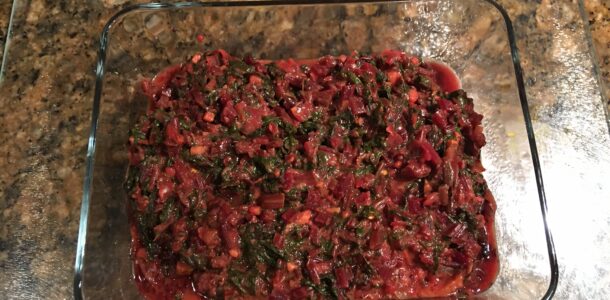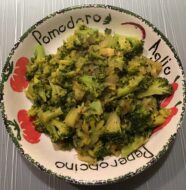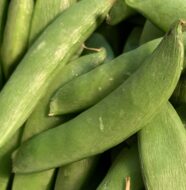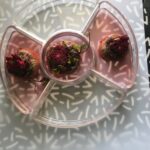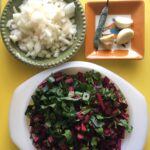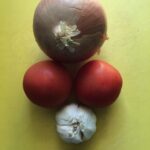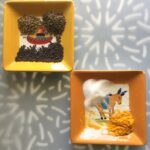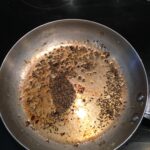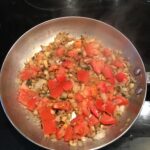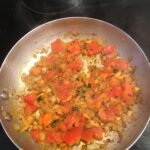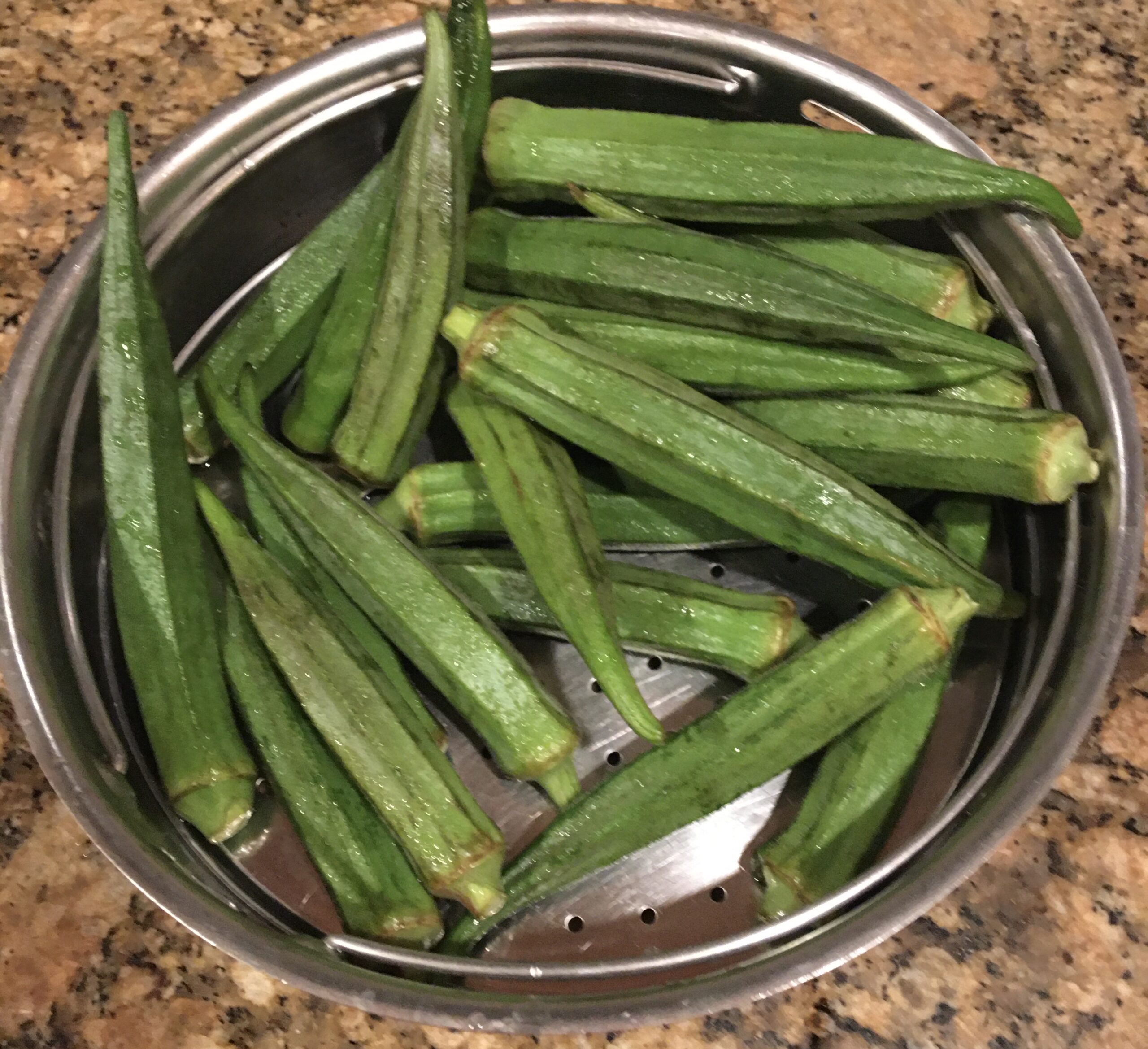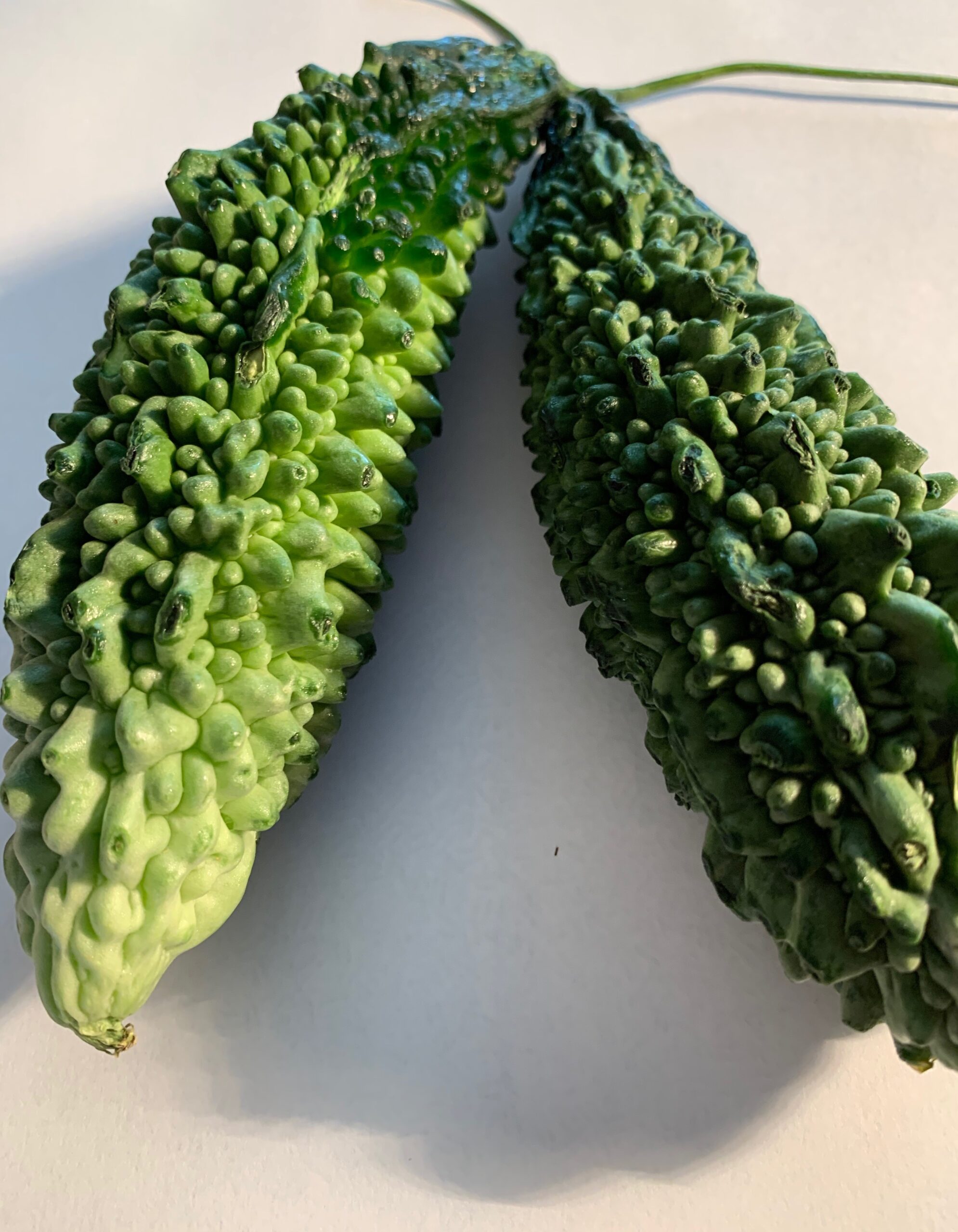Beet greens belong to the Goosefoot family known as Chenopodiaceae. They are grouped along with Spinach, Swiss Chard, or Quinoa in the dark leaf category. Beet tops contain more minerals, vitamins, and health-benefiting pigment antioxidants than beetroot.
It is better to use these greens within 2-3 days after refrigeration. They can also be eaten as a salad with balsamic vinegar and salt or sautéed in olive oil for a delicious side dish. In this recipe, beetroot leaves are chopped fine and sautéed in coconut or olive oil with onions and tomatoes. Chickpea flour, peanut butter, or sesame paste coagulate the leaves providing a delicious taste.
Growing Beet Greens: roots in water https://lilynicholsrdn.com/grow-beet-greens-at-home/
In soil:https://gardenerspath.com/plants/vegetables/harvest-beet-greens/
History: Humans originally ate beet greens but not the thin and fibrous roots that were used occasionally in medicine. The large beet leaves were consumed like Swiss chard. Beet sugar production requires 4 times lesser water than sugar cane making it an attractive crop throughout Europe and in arid countries like Egypt. Beets contain a substance called “geosmin” which is responsible for their earthy smell.
Nutrition Facts of Beet Greens
| GI 61; GL1 Water 91g |
Minerals | Vitamins % DV |
| Energy 22 kcal – 1% | Sodium 226mf – 9% | Folate 15mcg – 4% |
| Carb 4.3g – 3% | Potassium 762mg – 22% | Niacin 0.4mg – 2.5% |
| Protein 2.2g – 4% | Calcium 117mg – 12% | Pantothenic acid 0.25mg – 5% |
| Fiber 3.7g – 10% | Iron 2.6mg – 14% | Pyridoxine 0.106mg – 8% |
| Sugars 0.5g | Magnesium70mg – 17% | Riboflavin 0.22mg – 17% |
| Fat 0.1g -<1% | Phosphorous 41mg – 4% | Thiamin 0.1mg – 8% |
| Omega 3 Fatty acids 4 mg |
Copper 0.2mg – 10% | Vitamin A 6326IU – 211% |
| Omega 6 fatty acids 41mg | Manganese -0.4mg -2% | Vitamin C 30mg – 50% |
| Selenium 0.9mcg – 1% | Vitamin E 1.5mg – 7% | |
| Zinc 0.4mg – 3% | Vitamin K 400mcg – 333% |
(Source: USDA National Nutrient data base)
Health Benefits of Beet Greens
- Studies have shown that vitamin K in beet greens contains blood-clotting properties and wards off osteoporosis.
- Vitamin K works with calcium to boost bone strength and play a role in fighting Alzheimer’s disease.
- Beet greens have a higher nutritional value and iron content than spinach and beetroot.
- Vitamin A content in beet greens helps strengthen the immune system and regulates the production of antibodies and white blood cells.
- Beta Carotene in Vitamin A is a known antioxidant that can fight the effects of free radicals in the body against cancer and heart disease.
Spice & Herb Powers
- Mustard seeds act as a decongestant that helps in clearing the mucus in the air passage.
- Cumin seeds have calcium that helps to increase bone density.
- Thyme seeds are a good source of vitamin A & C to boost immunity and prevent cold & cough.
- Ginger contains gingerol which has anti-inflammatory properties.
- Garlic has an active compound Allicin that can reduce blood pressure (4 cloves/day).
- Green chili has anti-bacterial properties to protect the body from free radicals.
Method to make Beet Greens Sauté
- Veg. prep :
- Slice the leaves from the beetroots; cut into thin strips and chop fine. Wash thoroughly free of mud and drain in a colander. Peel and chop onions fine. (4 min.)
- Masala prep:
- Heat the oil in a frying pan; add mustard and cumin or thyme seeds. When mustard seeds splutter, add onions, spices, and pastes. Sauté until onions turn golden; add tomatoes and sauté until soft.
- Sauté Greens
- Add chopped beetroot leaves, sauté until all water evaporates. (5 min.)
- Sprinkle gram flour and stir quickly to bind the leaves. OR mix peanut butter or sesame paste (Tahini). (1 min.)
Serve Beetroot Leaf Subzee with Quinoa, French Bread or Naan.
Tips
Time Saver: Use a food processor to chop leaves
Variation add frozen peas or corn with the beet greens
Time Saver: Substitute ginger-garlic paste with the powder
Leaf = patha; Subzee = dry vegetable

